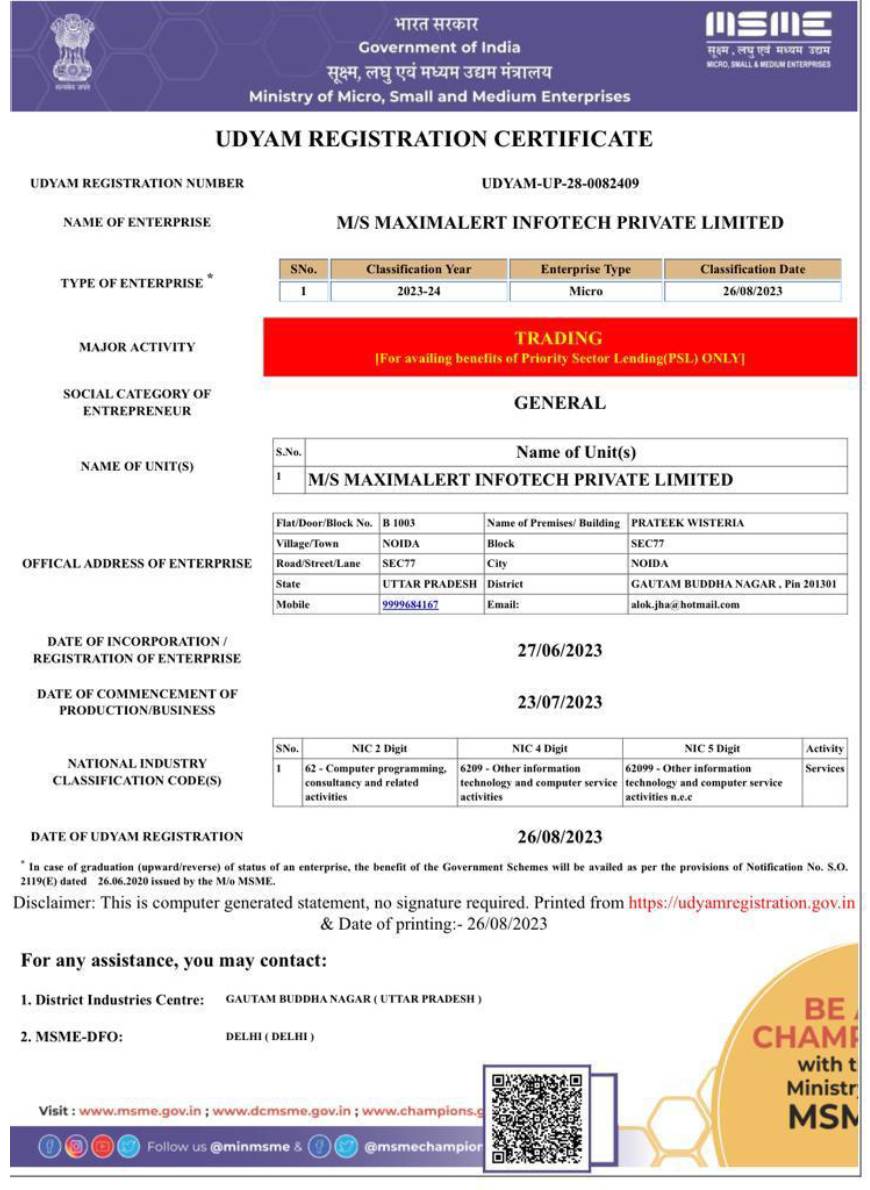An analysis of the Typhoon Cyber Groups
MaximAlert
April 4, 2025
Visit Count : 4
An analysis of the Typhoon Cyber Groups
Threats to Critical Infrastructure and the Role of Infrastructure Intelligence
Cybersecurity has long been a top priority, with numerous reports highlighting the increasing frequency and complexity of cyberattacks. Among the most concerning adversaries are the Typhoon cyber groups, a collection of advanced persistent threat (APT) actors attributed to China. These groups, including Salt Typhoon and others, have demonstrated a growing capability to target and compromise critical infrastructure on a global scale. Understanding their operations, tactics, and the role of infrastructure intelligence in defense is crucial for national security, organizational protection, and economic stability.
Expanding Reach and Sophistication
Typhoon cyber groups are rapidly expanding their reach, conducting cyber espionage and disruptive attacks across industries such as telecommunications, energy, finance, and government institutions. Their targets are often high-value entities where a single breach can have widespread consequences. Groups like Salt, Silk, Volt, and Nylon leverage advanced techniques such as:
- Supply chain compromises
- Exploiting zero-day vulnerabilities
- Using legitimate administrative tools to blend in with normal network activity
One of the most notable, Salt Typhoon, has been linked to high-profile breaches. Their focus on telecommunications providers has allowed them to intercept vast amounts of metadata and, in some cases, even gain access to audio recordings of phone calls. These attacks indicate an intent to surveil key individuals, disrupt national security, and undermine trust in critical communication networks.
Attacking Critical Infrastructure
The most alarming aspect of Typhoon cyber groups is their focus on critical infrastructure, where attacks can have devastating consequences, including power grid failures, communication blackouts, financial market disruptions, and national security breaches. Key sectors targeted include:
- Telecommunications: Typhoon groups have infiltrated telecom networks to monitor communications, extract sensitive data, and potentially disrupt services.
- Energy and Utilities: Attacks on energy providers can cripple electricity distribution, water supply systems, and oil and gas pipelines, leading to economic instability and safety risks.
- Financial Systems: By targeting banks, stock exchanges, and payment processors, these groups can disrupt economic activities, manipulate transactions, and conduct financial espionage.
- Government and Defense: Espionage efforts have targeted military and government institutions, potentially compromising classified information and national security strategies.
The convergence of cyber and physical threats highlights the urgent need for proactive defense measures. A single cyberattack can cascade into real-world disruptions affecting millions.
The Role of Infrastructure Intelligence in Cyber Defense
To counter the growing threat of Typhoon cyber groups, infrastructure intelligence has emerged as a critical required capability. By understanding their use of infrastructure, organizations can detect threats early, track adversary techniques and tactics, and proactively defend against attacks.
- Detecting Attacks Early Infrastructure intelligence enables security teams to monitor network activity for signs of compromise. By monitoring outbound DNS traffic, seeing the unusual destination requests, and anomalous behaviors, and organizations can identify potential intrusions before they escalate, even from new endpoints like IoT devices.
- Understanding Command-and-Control (C2) Operations Typhoon groups rely on command-and-control (C2) infrastructure to coordinate their attacks, exfiltrate data, and deploy malware. Infrastructure intelligence helps shine a light on these C2 domains and related infrastructure, allowing security teams to disrupt adversary communications and neutralize threats before they cause significant damage.
- Proactive Protection Measures Traditional cybersecurity approaches often focus on reactive responses, but infrastructure intelligence shifts the paradigm to proactive defense and overall resiliency, allowing organizations to harden themselves against emerging threats, reducing the likelihood of a successful attack.
Strengthening Cyber Resilience
The growing capabilities of Typhoon cyber groups underscore the urgent need for comprehensive cybersecurity strategies. Governments and organizations must prioritize investments in infrastructure intelligence, strengthen cross-sector collaboration, and adopt a proactive mindset in defending against cyber threats.
It’s exactly for this reason that organizations need dedicated infrastructure intelligence and related indicators of compromise (IOCs).
Understanding Infrastructure Intelligence
At its core, Infrastructure Intelligence provides a detailed view of the infrastructure used by adversaries to plan and execute cyberattacks. It includes data related to adversary techniques and operations, enabling organizations to uncover critical details of attack campaigns.
Infrastructure Intelligence goes beyond traditional datasets offered by most threat intelligence feeds. It consolidates multiple layers of information and correlates them to deliver a contextualized understanding of cyber threats.
Here are the five key elements that define Infrastructure Intelligence:
1. Details on Attacker Infrastructure
The foundation of Infrastructure Intelligence lies in identifying the infrastructure footprint of malicious actors. This includes:
- Passive DNS Data: Historical records of DNS queries, enabling investigators to trace domains used in past attacks.
- WhoIs Records: Ownership and registration details of domains involved in malicious activities.
- Certificate Data: SSL certificates that shed light on the configuration of adversary infrastructure and shared resources.
2. Enhanced Datasets for Advanced Threat Analysis
While traditional internet intelligence (e.g., passive DNS or WhoIs data) remains valuable, Infrastructure Intelligence extends far beyond this:
- Command and Control (C2) Infrastructure: Insights into adversaries’ malicious servers and tools used for attack coordination.
- Specialized WhoIs and Geospatial Data: Granular exclusive datasets offering unmatched visibility into attacker identify, location, and behavior.
- Internal Account Details: Data from private sources to link threat activity to specific aliases and unique IOCs.
- Malware Infrastructure: Comprehensive details on new malware infrastructure, providing teams with better information on malware families and related context to effectively block new and existing threats.
3. Correlating Data to Manufacture Better Context
Infrastructure Intelligence is not just about collecting data; it’s about connecting the dots. It correlates diverse intelligence and generates a more unified view of threats.
Infrastructure Intelligence fingerprints past DNS resolutions and connects that domain to command-and-control servers, associated IP addresses, and related malware samples. It provides details about the identity and behavior of attackers that can lead directly to the take-down of their infrastructure and follow-on law enforcement actions.
4. Answering Key Questions with a Proven Model
Effective Infrastructure Intelligence provides answers to three critical questions commonly posed by threat hunters, fraud prevention investigators, and mission-specific teams in federal agencies and law enforcement:
- Verdicts on Indicators of Compromise (IOCs): Is this IP, domain, or observable malicious, benign, or suspicious? What evidence is available to support this assertion?
- Related Infrastructure: What other domains, IPs, or networks are associated with this activity? Connecting a piece of known-bad intelligence into a larger picture can be priceless in terms of protecting your organization.
- Threat Actor Information: Who is behind the attack? What can we ascertain about their goals and motivations, and also their behavior and identity?
5. Geospatial and Behavioral Insights
To truly elevate your understanding of your adversary, Infrastructure Intelligence matrixes additional intelligence layers against the insights described above in several other ways:
- Geospatial Data: Pinpoint attacker locations to understand geographic footprints of campaigns and the spatial correlation of attacker activity with wifi networks, other adversaries, and more.
- Behavior-Based Indicators: Identify unusual network behaviors and patterns linked to adversarial activity.
These insights transform raw technical data into actionable intelligence, and make it easier to act decisively to protect your organization or realize your operational mission.
Conclusion
Typhoon cyber groups represent a persistent and evolving threat to global security. Their focus on critical infrastructure, combined with their sophisticated attack methodologies, makes them formidable adversaries. However, by leveraging infrastructure intelligence, understanding their tactics, and taking proactive measures, organizations can enhance their cyber resilience and protect vital systems from devastating attacks. The future of cybersecurity depends on staying ahead of these threats through continuous innovation, collaboration, and vigilance.




